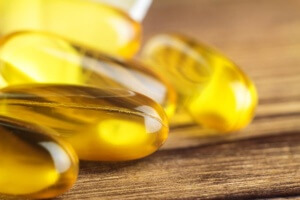
Below, you will find practical information on the best omega-3 fatty acid foods.
This article is the second one of our series on foods that lower blood pressure.
In a previous post, we talked about beets and nitrate-rich foods. The omega-3 fatty acid foods provided below are not listed by importance or priority.
In fact, they are all equally important in a general sense. We include many details that you may not find elsewhere.
Top 8 omega-3 fatty acid foods
1. Wild fish
In general, fish is one of the best omega-3 fatty acid foods you can eat. Unless you are a strict vegetarian, you should aim to eat fish at least twice a week.
If you are prone to high blood pressure, and you are attempting to control it through diet alone without taking prescription medication, you should either supplement with fish oil on days you do not eat fish or eat fish more frequently than twice a week.
All types of fish contain a substantial amount of Eicosapentaenoic acid (EPA) and Docosahexaenoic acid (DHA), the types of omega-3 that your body can readily use. So, you really can't go wrong with eating any variety of fish.
However, certain types of fish do contain more omega-3 than others. The most important thing you need to remember is that wild fish always contain more omega-3 than farmed fish. There are no exceptions to this. So, do not be fooled by marketing claims that say otherwise.
Fish get their omega-3 from what they eat. Farmed fishes are fed unnatural foods like genetically modified soy and corn. Therefore, they do not have as much omega-3.
Darker oily fish contain substantially more omega-3 than white flakey fish.
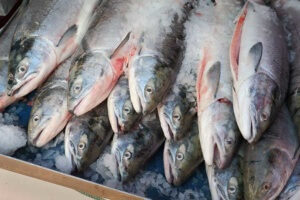
This is followed by mackerel, lake trout, swordfish, and albacore tuna. Note too, darker tuna, i.e. the cheap stuff, has more omega-3 than the lighter tuna.
It should also be mentioned that canned fish, tuna or salmon for example, contains less omega-3 than fresh fish. Another interesting fact is that the omega-3 levels in some bottom feeding white fish like halibut and flounder varies a lot in omega-3 levels depending on where they are caught and the season.
Scientists are still trying to figure this out. They are investigating precisely what makes the difference. Hopefully we will have more information to share on this soon that could be helpful to the shopper.
2. Wild seafood
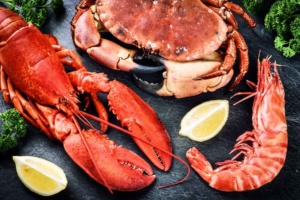
In fact, wild seafood contains about as much omega-3 as white flakey fish. Thus, you can enjoy eating crab, shrimp, lobster, scallops, mussels, oysters, abalone, sea snails, limpets, squid, tunicates (sea squirts), uni (sea urchin gonads), and sea cucumbers. Even more knowing that these delicious foods will help to lower your blood pressure!
Note that the last three seafoods in this list are more popular in Japan and the South Pacific region of the world. But you can find them in Asian stores in the United States as well as many Asian restaurants.
Please also note that many of the omega-3 food charts found on the Internet significantly underestimate the omega-3 levels in seafood. The main reason is the fact that the assays that produced the numbers they post used FARMED or cultured seafood! Just like with fish, farmed and cultured seafood has less omega-3 than their wild counterparts.
3. Grass-fed beef
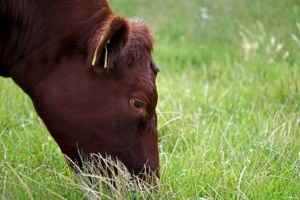
Furthermore, they obtain EPA and DHA omega-3 from eating grass and this is passed to other animals. Including humans, who eat hoofed animals who fed on grasses all or most of their lives.
So, while grass-fed beef is a good source of omega-3, the vast majority of beef sold in grocery stores is not a good source of omega-3 because of the artificial grain diet the cows were fed.
4. Venison

If you are unable to obtain your own deer meat, you may want to consider bartering with your friends and neighbors who get deer. For example, if you grow a garden, you could offer them some fresh vegetables in exchange for fresh deer meat.
5. Buffalo
Almost all buffalo raised in the United States is grass-fed. It is an excellent source for omega-3.
It can be tough to get buffalo steaks and other cuts at your local markets. However, ground buffalo meat is becoming more readily available. In this form, it is highly versatile and can be incorporated into many dishes.
Also available on the market now in many health stores and natural food stores are buffalo jerky and buffalo bars. The latter is often blended with other healthy ingredients like cranberries. These are great grab and go snacks loaded with omega-3 fatty acids.
6. Eggs from free roaming chickens
If chickens are allowed to roam around and eat as ground birds naturally would, their diet consists mostly of wild grasses and insects!

So, if you want to eat eggs high in omega-3 to help control your blood pressure, it is best to find a local source such as a farmer at a farmer's market. Or you can buy eggs sold in a natural food store where you can be sure the eggs are from free-roaming chickens.
In many cases, you can even visit the farm to see the chickens roaming around eating bugs and grass for yourself! This is, in fact, the best way to verify your source of eggs.
7. Vegetarian foods
It is much harder to get adequate levels of omega-3 from a vegetarian diet, especially if you are trying to get enough to help control high blood pressure.
In fact, the form of omega-3 in plant sources is Alpha-Linolenic acid (ALA), not EPA and DHA. The human body is unable to utilize ALA directly and must convert it first to EPA or DHA. The problem is the conversion rate of ALA into EPA and DHA is not very high.
In a healthy young person, the best conversion rate is only about twenty percent! Moreover, as you get older, the conversion rate drops considerably. It also drops if you have any health issues such as type 2 diabetes or autoimmune diseases.
Even though vegetarian foods are not the best sources of omega-3, you should still add them to your diet. They are healthy foods in their own right. You will get a nice supplemental boost of omega-3 from them.
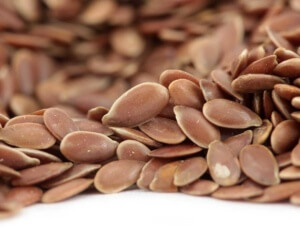
There is one exception for a non-animal source of DHA and EPA, although it is not technically a vegetable. This is spirulina, often called “blue green algae”. It's actually a cyanobacteria, a singled celled organism that is closely related to bacteria but photosynthesizes like algae.
You can buy spirulina in powder form and easily mix it into your smoothies for a good boost of EPA and DHA. And many other micronutrients, including trace nutrients that are hard to get otherwise.
8. Insects
While many Americans repel at the very idea of eating insects, they are consumed as a dietary staple all over the world. Furthermore, they are sky high in omega-3!
If you are an adventurous eater, you can now find insects sold in many health stores, gourmet food stores, and natural food stores.
One easy way to add insects to your diet is to buy insect flour and add this to your baked goods and sauces.
Practical considerations regarding omega-3 fatty acid foods
1. How to know you're getting wild fish and seafood
First, you need to know that if fish or seafood is not labeled as “wild,” you should assume it is farmed.
Second, you have to be on the lookout for false labeling as several investigative reporters have uncovered that much of the fish and seafood being sold as “wild” is actually farmed!
If you are buying salmon, if the color is very subdued, this is a sign it is likely farmed. Grocery store chains are not the best source for buying wild fish and seafood as there are so many middlemen they often sell fish labeled as “wild” that is not really wild.
Try to buy from a seafood market or a natural food store that has a more direct relationship with the source of the fish. Of course the best way to get wild fish and seafood is to go out and collect your own or barter with someone else who does!
2. The practical matter of price
If you're on a tight budget, you may not be able to afford to eat high omega-3 fatty acid foods like salmon and grass-fed beef twice a week or more. We suggest you incorporate more of the small oil fish like sardines and herring into your diet if this is the case.
If you live near a local fish shop, ask them if they carry fresh sardines or herring at any point during the year. These taste nothing like the canned variety and are absolutely delicious grilled. However, if all you can get is the canned variety, we suggest looking for recipes online using these cheap high omega-3 ingredients.
3. A special note about toxins in fish and seafood
Wild fish and seafood contain far fewer contaminants (PBCs and heavy metals) than farmed fish. This is because wild fish eat a very different diet than farmed fish. Moreover, they are not contained in water than becomes highly contaminated.
This is an important consideration when adding more fish to your diet as you want to minimize the accumulation of these toxins in your system.
Conclusion
It’s time to enjoy these omega-3 fatty acid foods on a regular basis. As a result, you should see your high blood pressure and/or high cholesterol levels go down naturally if you are affected by these cardiovascular diseases.
In this way, you may be able to avoid taking the prescription drugs that commonly cause unwanted side effects.







